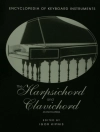The a
esthetic exception theorises anew the relation between art and politics. It challenges critical trends that discount the role of aesthetic autonomy, to impulsively reassert art as an effective form of social engagement. But it equally challenges those on the flipside of the efficacy debate, who insist that art’s politics is limited to a recondite space of ‘autonomous resistance’. The book shows how each side of the efficacy debate overlooks art’s exceptional status and its social mediations. Mobilising philosophy and cultural theory, and employing examples from visual art, performance, and theatre, it proposes four alternative tests to ‘effect’ to offer a nuanced account of art’s political character. Those tests examine how art relates to politics as a practice that articulates its historical conjuncture, and how it prefigures the ‘new’ through simulations capable of activating the political life of the spectator.
Cuprins
Introduction The horizon of the aesthetic
Part I The aesthetic exception
1 The paradox of the aesthetic exception
2 Crossing the threshold
3 The institution of art: critical and theoretical reflections
Part II Political art after the communicative turn
4 The classical debate revisited: Sartre, Brecht, Adorno
5 Art of the communicative turn: Habermas and the political
6 What is the proper way to display a US flag? – the work of
“dissensual speech” in art
Part III Taxonomy of the political theatre
7 Foundational problems and problems of foundation
8 Displacement effects: Althusser’s “Brecht” and the theatre
of the conjuncture
9 Activist theatre of the conjuncture: the case of Janam and the
street theatre in India
10 The “closure” of the political theatre and the critique
of post-dramatic reason
11 The political theatre redefined
12 The theatre of the planetary conjuncture: Milo Rau’s
Congo Tribunal
13 On taxonomic strategies
Index
Despre autor
Tony Fisher is Reader in Theatre and Philosophy at the Royal Central School of Speech and Drama, University of London












